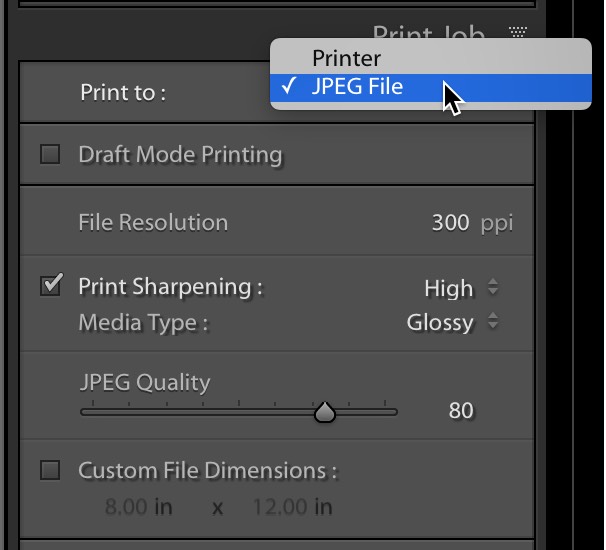On Friday we started a series of free Webcasts (ones that we usually do for KelbyOne Members, we opened them to everyone during this virus crisis), and the first one was on how to prep your images for printing at a photo lab. I did the entire thing in Lightroom Classic since…well…the other Lightroom (cloud) doesn’t do printing at all…so…there’s that.
Anyway, I take questions from viewers during the live Webinar and one of them sent us down a bit of a rabbit hole, and surprisingly it was about file formats, and in particular, should they save their files in TIFF format for maximum quality?
Here’s the short answer. No. In fact, don’t use TIFF for anything ever really, unless you’re absolutely instructed to by another person who is still hanging on to information that was at one time valid, in a particular situation (you were sending your photos to a graphic designer who was using a design or layout application that at that time only supported TIFF, but of course now they all support .PSD (Photoshop’s native file format) and JPEGs, which are better choices). So, TIFFs were “OK” before the .PSD format because supported by about every application on earth.
I know you’ve heard that TIFFs are “lossless” and all that outdated stuff (yes, they’re lossless but so are PSDs). So, in short, don’t shoot in TIFF mode on your camera (Shoot in RAW or JPEG). Don’t save files in TIFF. You can pretty much pretend TIFF doesn’t exist. TIFF files are tremendously large in file size and don’t offer any advantages over saving your files in .PSD format (yes, even Lightroom lets you save your images in .PSD format because it’s a kick-butt format that keeps your original data intact but still gives you a smaller file size).
* OK, there is one particular situation, that I doubt most of us will ever encounter, where you have to use TIFF (rare though it may be), and that is if you have a photo that is more than 2-gigabtyes in size, you have to save that as a TIFF. That’s a pretty huge file (I’ve never had one that large myself), but since somebody was going to point it out in the comments because that’s what people do on the Internet, I thought I’d include it).
So which file formats do I save in?
Mostly JPEG, but otherwise, .PSD (for example, when I’m sending a file from Lightroom to Photoshop for editing, and back — you can read more about that here). Even when I’m sending an image to a photo lab for printing, I sent it as a JPEG. In fact, if you go to Lightroom’s Print Module, and choose to save your layout as a file to send to the lab, it only gives the choice of a JPEG. (see below).

You’ll also notice I save my JPEGs out of Lightroom at a Quality setting of 80. I like the quality/file size ratio (the image still looks perfect but the file size is smaller. I work on a laptop and I’m always fighting the fill-size war, but there’s nothing at all wrong with choosing 90 or 100 quality if you like.
Hope you found that helpful. 
Follow me on Twitter or Facebook to find out when my next free live Webinar (open to everybody) – I’m doing one later this week – is scheduled.
Stay healthy and take care of each other. 
-Scott
The post Don’t Use TIFF. For Anything. Ever.* appeared first on Lightroom Killer Tips.
#art #illustration #drawing #draw #picture #artist #sketch #sketchbook #paper #pen #pencil #artsy #instaart #beautiful #instagood #gallery #masterpiece #creative #photooftheday #instaartist #graphic #graphics #artoftheday #beautiful #abstracto #stayabstract #instaabstract
https://ift.tt/3bgI4Kz
Comments
Post a Comment